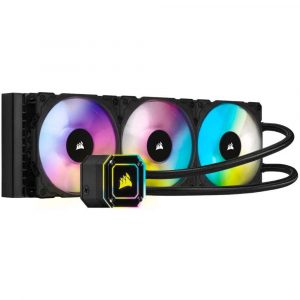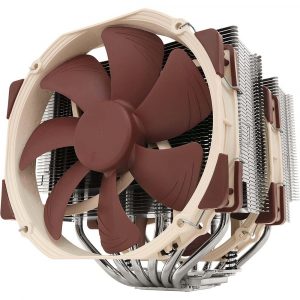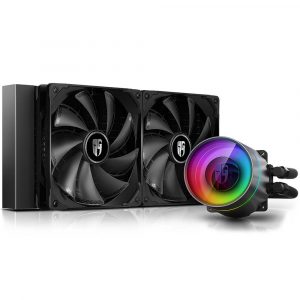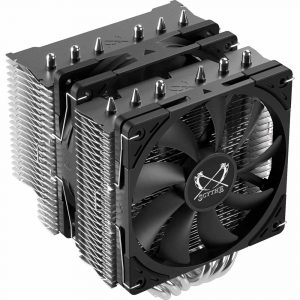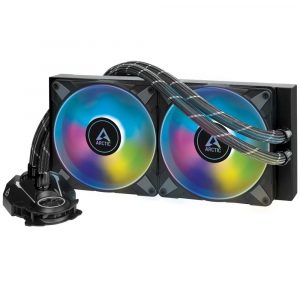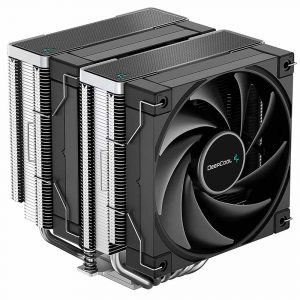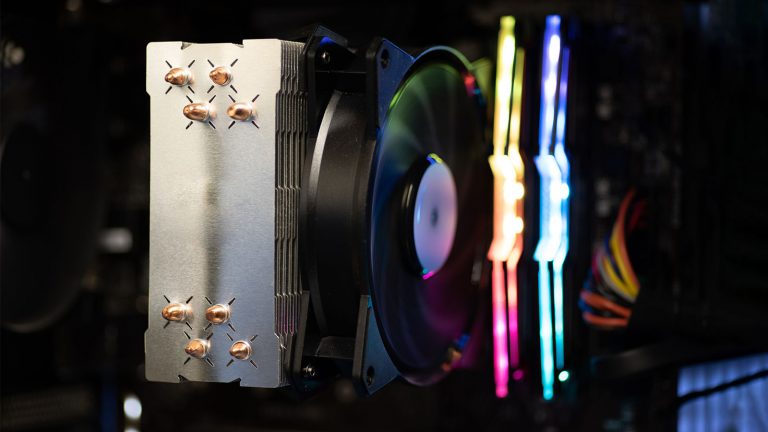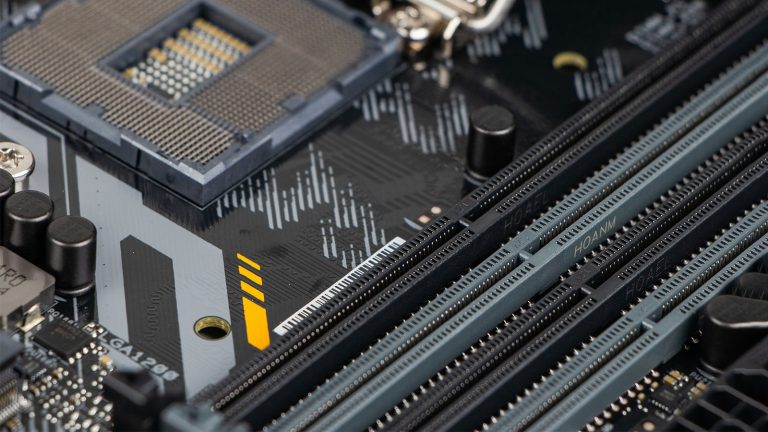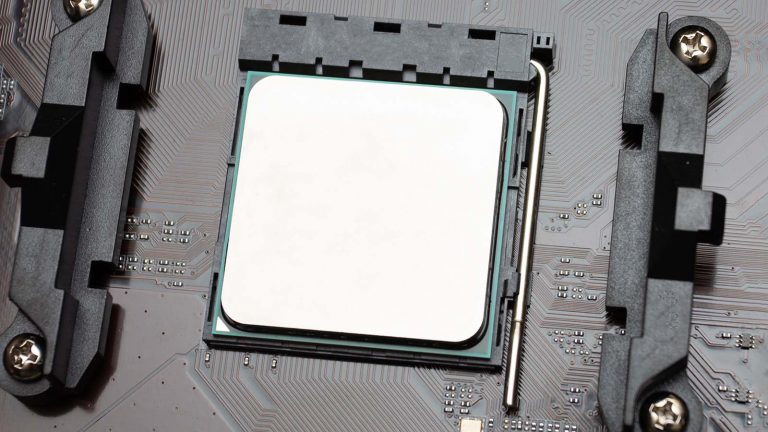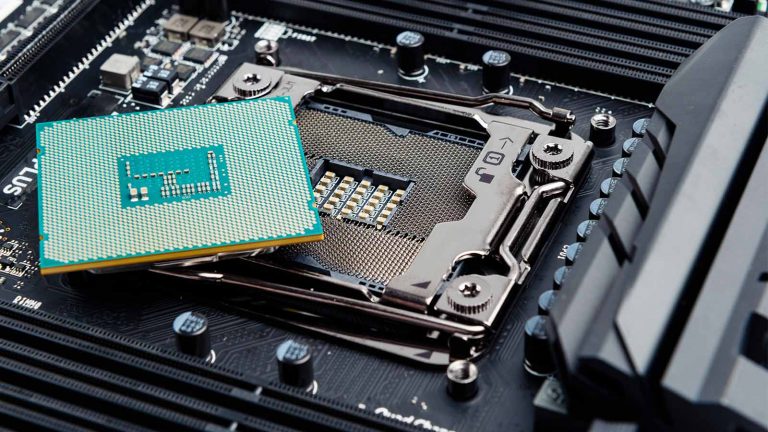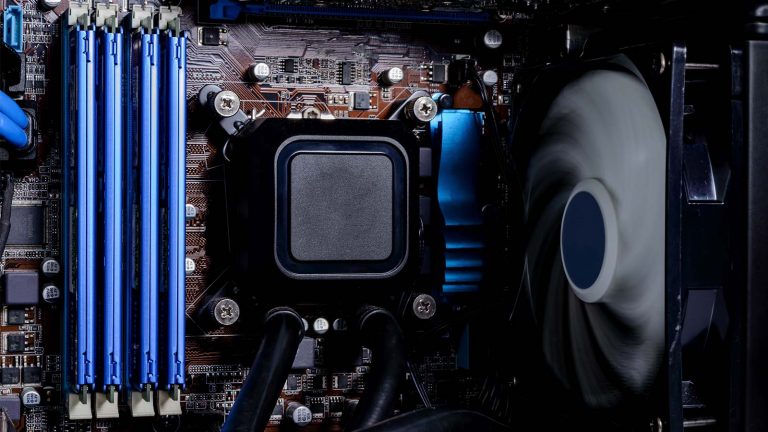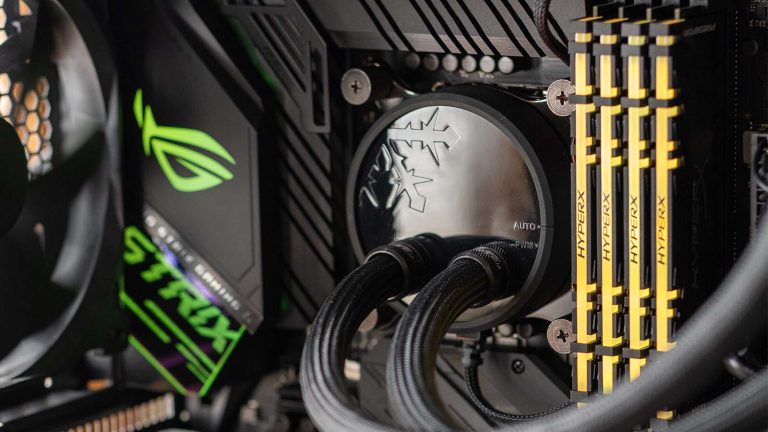6 Best CPU Coolers for Ryzen 9 7950X in 2024
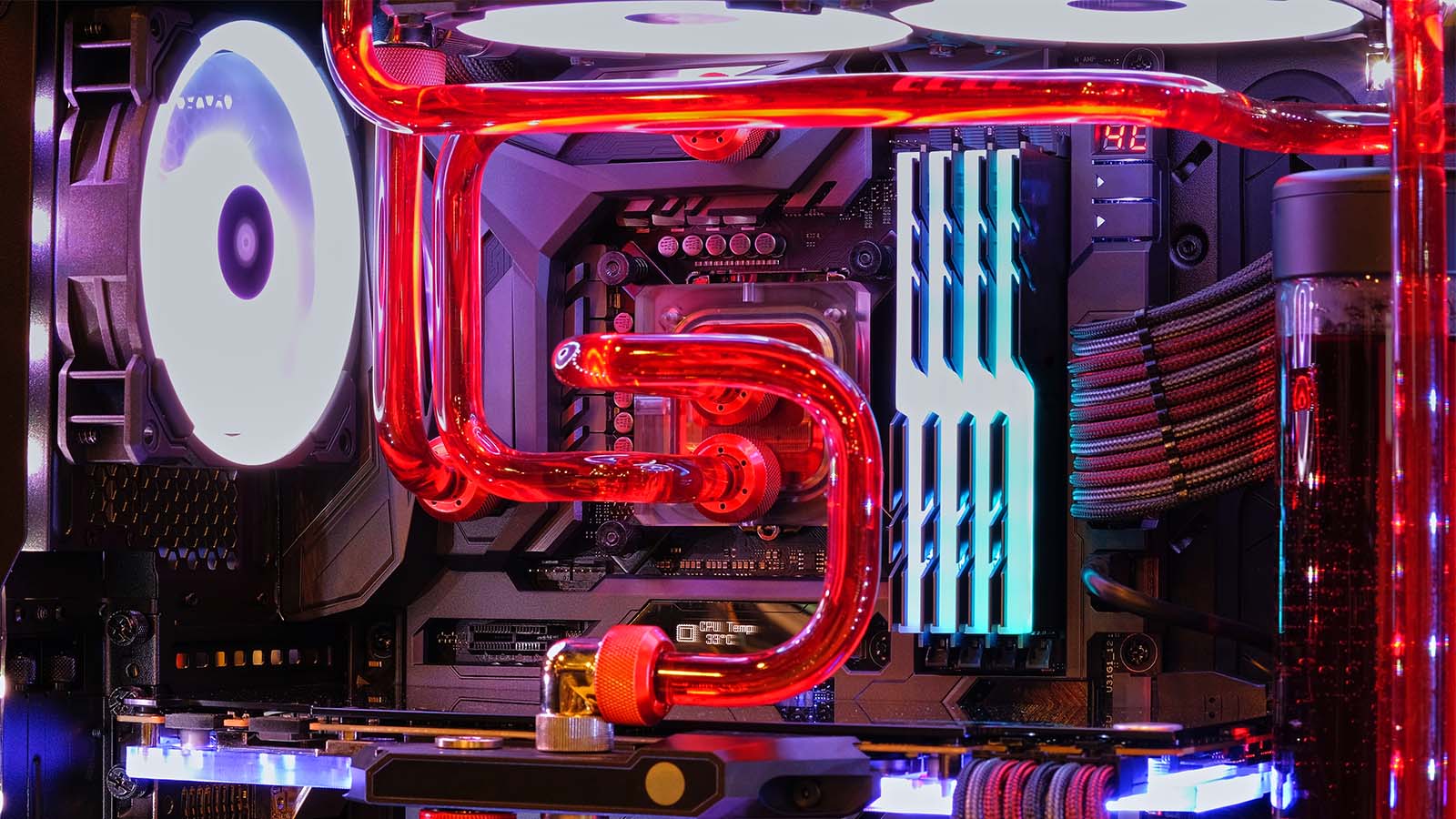
Five years after its disruptive burst onto the stage, it’s time to bid farewell to AM4. There’s no need to mourn for long, as the platform’s successor already gives us a good look at AMD’s bright future. Its most powerful chip is already significantly faster than the 7950X for productivity and gaming alike. The generation also comes with some thermal quirks, so read up on our recommendations for the best CPU coolers for Ryzen 9 7950X & the FAQ section so you know what you’re getting yourself into.
Best High-End Cooler: Corsair H150i Elite Capellix
Corsair’s Elite Capellix has been at the top of several of our recommendation lists, and with the 7950X, it has met its match. Due to the chip’s new thermal philosophy, not even this beastly cooler will be able to keep it under 95°C in some scenarios. However, it’s one of few AIOs that will allow you to overclock and reliably benefit from those improvements regardless of the tasks you have it do.
The NZXT Kraken X73 is the obvious high-end AIO competitor. It’s not as flashy if you don’t go for the Z73 and its LCD screen. Still, the cooling efficiency is on par with Corsair’s.
Little has changed in the H150i’s appearance between versions. The pump head is still cube-like in appearance, with chamfered edges for more visual interest. The cap on top is black with a Corsair logo outline that shines with a neon glow due to the unique lights underneath. You can also exchange it for an inverted cap that accentuates the lighting more or 3D print a custom design.
The pump head’s bottom has a milled, slightly convex layer of copper that makes contact with the 7950X. There’s already some thermal compound on it to speed the installation up. A pair of long tubes connect to the pump head and end in 90-degree swivel fittings that improve flexibility.
The radiator is a standard-issue 360mm unit whose large surface area is its defining feature. While using it requires a sizeable case, the additional area and volume help expel heat more efficiently and cause the fans to run quieter.
Speaking of, the H150i Elite Capellix has three ML 120 RGB fans. They spin quite fast at 2,400 RPM, achieving 75 cubic feet per minute of air throughput each in the process. The fans are translucent and home to eight Capellix LEDs apiece. Combined with the 30+ on the pump head & iCUE’s in-depth control options, you get everything needed for a fantastic light show.
What’s so special about these LEDs? They’re made especially for Corsair products and are more efficient than the competition. Moreover, they’re smaller yet deliver greater luminosity, which looks striking inside dark and light builds alike.
If there’s anything inconvenient about the AIO, it’s the lack of support for light regulation through motherboard software. Corsair mitigates this by providing the Commander Core, a hub that plugs into one of your motherboard’s USB headers while providing lighting and RGB support for six Corsair fans.
None of this would matter were it not for the H150i’s exemplary performance and flexibility. Other than lighting control and comprehensive system oversight, iCUE also provides several one-click fan profiles. Zero RPM Mode is a godsend for idling CPUs, while Extreme will let you overclock the 7950X without throttling.
Remember that high max RPM? It comes with a lot of noise if you keep the fans running at 100%. Luckily, the Balanced preset leaves much of the H150i’s cooling proficiency intact while making it noticeably quieter.
Best High-End Air Cooler: Noctua NH-D15
The NH-D15 has been with us since 2013, and it’s a testament to engineering excellence that the cooler is as relevant as ever. We’ve yet to see if the new design coming in 2023 will supplant it, as the shoes the newcomer has to fill are imposing. Noctua’s signature cooler is expensive, built to last, and has outstanding thermal efficiency with a reasonable noise output.
If you dislike the original Noctua color scheme and don’t want to pay extra for the NH-D15’s Black Edition, go for the Dark Rock Pro 4 from be quiet! instead.
It’s impossible not to be moved by the NH-D15’s imposing heatsink array. It is a dual-tower setup consisting of 45 fins each. The seven on the bottom are shorter to accommodate RAM on a variety of motherboards, including ones for servers. All the fins are made from aluminum and have small holes next to the heatpipes. These were helpful in soldering the two together for an even more effective thermal exchange.
The fins’ design also warrants a closer look. Observing them from the top reveals that the middle not only resolves with a V-shape but is thinner than the edges too. Each stack also has several teeth on the sides. Combined, these features let air swirl more while picking up speed before it crashes into the stack proper. The sides are closed off so air has nowhere to escape but through the second tower and out of the case.
The baseplate is more conventional, consisting of a finely-machined CPU contact area and a top that houses part of the mounting hardware. The NH-D15 uses six heatpipes sandwiched between the baseplate’s two layers. They fan out so that each gets as much space as possible before entering the fin stack.
The two NF-A15 fans befit the cooler’s stature, coming in at a diameter of 150mm each. Their large frames allow them to spin more slowly, maxing out at 1,500 RPM while still circulating more than 80 CFM of air. Two low-noise adapters make them even quieter by limiting the rotation speed to 1,200 RPM.
An assembled NH-D15 weighs close to three pounds and is 165mm tall. You’ll need a roomy case, relatively short RAM, and a mobo that doesn’t go overboard with its M.2 heatsinks to set the cooler up and access adjacent components comfortably .
The NH-D15 is among the best air coolers ever made. That qualifies it as an excellent choice for explaining the 7950X’s behavior. Ian of TechTechPotato paired the two and got results owners of previous CPU generations may need to adjust to. The CPU hit its working temp 95°C max during intensive rendering. The frequency clock starts falling the more cores are engaged, but only by 100-200MHz.
Such a shift in design philosophy means you’ll have to adjust the NH-D15’s fan curve based on workload rather than on the CPU temperature. Not that running the fans at or close to 100% would negatively impact your enjoyment much since the fans are among the most silent out there.
Best Mid-Range AIO: Deepcool Castle 280EX
The first of our two Deepcool 7950X cooler picks is a simple-looking yet sophisticated AIO. The Castle 280EX combines excellent hardware with a bit of RGB bling to get close to the H150i’s performance without costing as much. Installation is a breeze due to AM5’s backplate integration, and the cooler comes with several innovations.
Want to get the most out of the 7950X without as much noise? Then the Pure Loop 360mm AIO from be quiet! is your best bet.
We’re fond of Deepcool’s approach to AIO design since it caters to everyone. On the one hand, the black fans and radiator are hard to distinguish in the dark, which lovers of stealthy builds will appreciate. On the other hand, the circular A-RGB area on the pump head provides a source of good-looking diffuse light that works with your motherboard and fits well with existing lighting.
The pump looks like a standard Asetek cylindrical design, but Deepcool emphasizes its increased efficiency and low noise. Coming with a pre-applied thermal compound is always a plus, as is placing the swivel fittings and cables on the same side for less clutter. Like the H150i, the Castle 280EX lets you remove or reorient the cap.
The radiator is a bit different from the norm. It houses an improved anti-leak technology and has a slightly lower fin density of 18 FPI. This lets the fans work less when expelling air while mitigating their lower static pressure.
The pair of all-black TF140S fans have few distinguishing features other than the larger 140mm size. However, looking more closely uncovers notches on their blades that help increase air turbulence. They spin from 400 to 1,600 RPM and can push a whopping 97 CFM out at max speed.
AM5 motherboards now come with integrated backplates, so balancing the plate and cooler during installation is no longer a problem. Deepcool has already created AM5 kits that use standoffs, brackets, and screws to hold the pump head in place without impacting the RAM. You only need to plug in a power & A-RGB cable and mount the fans onto the radiator to complete the process.
We chose the 280mm version of this cooler because it’s more compact than its 360mm counterpart yet performs above expectations. It keeps pace with the H150i in most scenarios, even outperforming it when testing for idle temperatures.
Noise is the only drawback. Other AIOs and air coolers are much quieter at idle, whereas the Castle 280EX already climbs past the mid-30s decibel mark. Expect more than 40dB in everyday use and closer to 50dB if you plan on pushing both the 7950X and its cooler.
Best Mid-Range Air Cooler: Scythe Fuma 2
An air cooler doesn’t need to scrape the $100 price ceiling to do well on a 7950X, as evidenced by Scythe’s popular Fuma 2. It has an interesting asymmetrical design that lets you reap the dual tower benefit while ensuring RAM compatibility. Installation is a cinch, making it an excellent choice for newcomers to custom PC building.
Noctua’s NH-U14S is a little more expensive, but it’s a solid alternative if you want a slimmer model without giving up on its cooling potential.
Unlike the NH-D15’s mirror-like approach to heatsink design, the Fuma 2 is built for maximum compatibility and minimal clutter. Its front tower is thinner, as is the fan you mount onto it. Both the front and rear heatpipes are pulled back and exit in a straight fan rather than angling outward first. This ensures excellent RAM clearance, and the topmost PGU slot should remain clear too.
The fins on each tower are interesting in their own right. Several on the bottom are shorter like on Noctua’s cooler, and all adopt a pattern of interchanging straight & sawtoothed endings. The top fin is black and thicker, which serves as a decorative detail while helping with thermal output.
The Scythe Fuma 2 comes with two fans and three sets of mounting clips, allowing you to mount another exhaust fan in the back. The two fans you get have the same RPM, but the front one is 10mm thinner than the middle one. The difference in thickness carries a throughput penalty – the front fan can only produce 34 CFM compared to the 51 CFM the more conventional blower achieves at max rotation speeds.
The contact plate is among the flattest in the industry, ensuring complete contact with the 7950X’s integrated heat spreader. You’ll have to apply thermal paste manually.
The installation procedure is simple and follows the steps most coolers need to follow when being mounted on AM5 motherboards. A gap between the front heatsink stack and middle fan is just large enough for the accompanying screwdriver to fit. That helps streamline the install since you can mount the fans before doing the same with the tower.
Given the price difference, it’s impressive how the Fuma doesn’t perform much worse than Noctua’s iconic air cooler while equaling some 240mm AIOs. That means a max frequency down by a few MHz during periods of prolonged stress and a degree or two more when playing games. Living with either won’t be a bother since a Fuma 2 running on full blast is about as loud as the Castle 280EX at only 50% speed.
Best Budget AIO: ARCTIC Liquid Freezer II 280 A-RGB
The liquid Freezer II is our most frequent liquid cooler recommendation, bar none. We’ll continue to hold it in high regard as long as it keeps offering outstanding cooling performance and ease of installation at more than acceptable prices. If you don’t need RGB, you won’t even need to pay NH-D15 level prices to get your hands on one!
The Cooler Master MasterLuqiud ML280 is a good alternative as 280mm AIOs go. It’s cheaper and not as focused on bling while having a slightly worse noise output.
Lack of charm due to the unique pump head and no RGB was the strongest complaint critics & users could come up with about the original. Arctic took this in stride & developed the Liquid Freezer II’s A-RGB version without major performance impacts. The milky white fans have to admittedly spin faster and suffer a 5 CFM drop compared to their black counterparts.
That’s a reasonable compromise, especially since now you get to enjoy diffuse light in millions of colors and sync it through your motherboard to tastefully accompany other light sources. Adding RGB didn’t impact installation difficulty either. An extra cable to plug into an A-RGB header is the only difference. It uses long tubing sleeves to make cable management easier.
On to what stayed the same, which is almost everything that made the original stand out. Even though the design is contentious, Arctic kept the large pump head and its integrated VRM cooling fan. You likely won’t pair the 7950X with a motherboard whose VRMs would need it, but the impact it can have on cheaper models could prove useful.
We’ve already made much ado about the radiator and its abnormal thickness. Combined with a fin density of only 15 FPI, it offers solid thermal accumulation potential while keeping the fans working at optimum levels. Said fans are already mounted onto it in the push configuration, helping to speed the installation up even further.
The Liquid Freezer’s idle temperatures are alright, but nothing to write home about. That quickly changes once the pressure’s on since it keeps older AMD CPUs exceptionally cool, considering how little you paid. For the 7950X, this translates to a high frequency ceiling when you’re rendering or doing complex physics & AI simulations.
While it isn’t problematic, the Liquid Freezer isn’t the most silent cooler. Testing puts it a notch above Deepcool’s AIO, so pick up a pair of quality headphones if you plan to put a lot of strain on the CPU & cooler combo.
Best Budget Air Cooler: Deepcool AK620
Our 7950X cooler roundup ends with an exciting new entry from Deepcool. The AK620 is stirring up a storm since it performs well above what its asking price of around $50 would suggest. Will it be enough to keep Zen4’s hottest CPU from significant throttling? Absolutely!
Does it make sense to pair such an air cooler with a processor this powerful? In an age where AMD and Intel are redefining what good thermals mean, yes, it does.
Deepcool isn’t the only company that recently released a knock-out! Thermalright’s Peerless Assassin 120 SE could also contend with the chip and is even less expensive.
If weight were the only sign of a good cooler, the AK620 would easily take the top spot. It’s even heftier than the NH-D15 while sharing similarities like two symmetrical cooling towers. The AK 620 adopts a different design featuring more pronounced angular cuts that remind us of the methods motherboard manufacturers use to expand their VRM heatsink surface area.
Deepcool didn’t skimp on style. You’ll see it in the plastic heatsink covers that tastefully hide six heatpipe cooling tips. They sport the Deepcool logo and a subtle square pattern. You’ll find more squares on the back of each tower, created by shortening parts of the fins into a pattern.
The fans are called FK120 and make their debut on this cooler. While plain in their black, nine-bladed appearance, they work well. Both have rifle bearings and rubberized corners for better vibration reduction. Their speeds range from 500 to 1,850 RPM, and 69 is the maximum CFM each can produce.
The baseplate takes the most direct inspiration from coolers like Noctua’s. It’s nickel-plated and polished, with a thin top part mostly useful for housing the mounting bar. The heatpipe spread is similar as well, and the fact that there are six of them at this price point is great news.
Deepcool designed the installation to be as user-friendly and intuitive as possible. There’s no need to fiddle with the backplate. Placing the correct spacers and replacing your mobo’s plastic brackets with the AK620’s metal ones is all it takes to get started. Applying the thermal paste, mounting the fans, and hooking the power cables up shouldn’t take more than 10 minutes after that.
The AK620 is another cooler testers paired directly with the 7950X. This Tech Canucks video reiterates what we’ve been saying about the NH-D15. They use the AK620 alongside an even cheaper air cooler and several AIOs. All of them hit the 95°C limit; the difference is that the AK620 can maintain 100-150MHz lower clocks than much more expensive AIO solutions.
You’ll want to adjust its fan curve to not go over 75% regardless of the CPU temperature since the fans are louder than 50dB at 100% rotation speed.
Frequently Asked Questions
Can I air-cool a 7950X? Is water cooling better?
Yes, you can use an air cooler with the 7950X and get the exact same thermal results you would with AIOs. That being said, you should consider going with water cooling if you have the money to spare.
Zen4 processors are more thermally similar to mobile CPUs than older desktop variants. They have a target max temperature of 95°C, which the 7950X easily reaches when performing strenuous workloads. It will do so on ANY COOLER, whether you slap an old Wraith Stealth onto it or use liquid nitrogen.
Zen4 chips are designed to draw more current and push their clock speed as high as it will go while maintaining that temperature maximum. Liquid coolers are more thermally efficient than air coolers, yet using one won’t lower the temperature in that case. However, it will allow a chip like the 7950X to run at or close to its highest frequency on all cores indefinitely.
The frequency drop associated with air cooling is slight, around 100-200MHz. However, most air coolers will need to run at 100% speed to maintain such a small gap. Lowering their usage through fan curve adjustments will increase the coolers’ longevity and decrease fan noise at the expense of widening said performance gap.
Keep in mind that such temperatures are likely only when the CPU is used to its limits. You wouldn’t want to buy the 7950X exclusively for gaming, but if you do game on it, expect temperatures in the 70s and 80s, depending on what cooling you use.
Does the Ryzen 9 7950X come with a cooler?
The 7950X is one of AMD’s most thermally demanding desktop processors to date. The company recommends at least a 240mm AIO or equivalent air cooler to get the most out of it under any workload. Providing such a cooler would make the chip even more expensive than it currently is while depriving you of the freedom to choose the type and size of cooler that’s best suited for your case and budget.
Zen4 is AMD’s first desktop CPU generation that eschews coolers altogether. Even the 7600X needs third-party cooling, so remember to factor that into your budget when putting together or upgrading your PC.
What kind of RAM does the 7950X support?
AM5 is a new platform of many firsts, and exclusive DDR5 support is one of them. Owners of older AM4 hardware might be dissatisfied with this since it means that switching over to the 7950X also entails a new motherboard and RAM purchase.
On the other hand, opting for DDR5 exclusivity allows AMD to help phase out DDR4, which could become obsolete as soon as Meteor Lake steps onto the scene sometime in 2023. Users who buy into the AM5 ecosystem may need to pay a higher upfront cost but will enjoy several years of platform support and effortless upgrades several years down the line.

